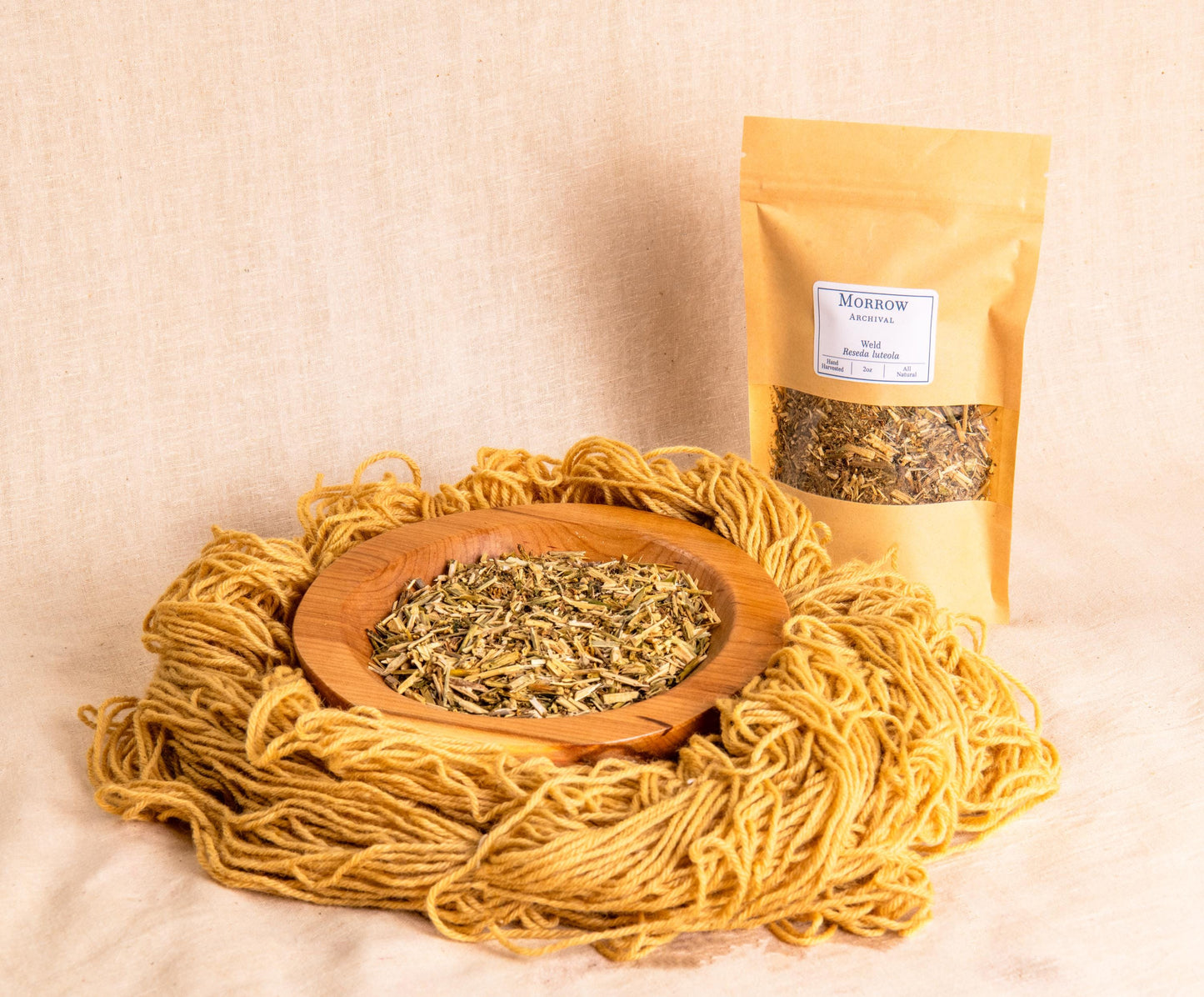Weld Dye
Weld Dye
Couldn't load pickup availability
Share

Description
Weld, derived from the flowering stalks of Reseda luteola, is the oldest and most lightfast natural yellow dye known to history. It yields a clear, luminous yellow, ranging from soft lemon to bold sunflower tones depending on concentration and mordant. Unlike golden or earthier yellows, weld is celebrated for its cool, bright character and remarkable brilliance, especially on protein fibers. It bonds strongly to wool, silk, and cotton, and layers beautifully with indigo for traditional greens used in medieval tapestries and illuminated manuscripts.
Recommended Use
Use at 100-200% WOF depending on desired strength. Soak overnight and simmer the dried plant material gently (190–210°F / 80–90°C) for 90-120 minutes and strain before dyeing. Works exceptionally well with alum mordant. For cellulose fibers, use tannin pre-treatment followed by alum for optimal results. Cream of tartar may be added to soften the tone, while chalk will brighten and cool it further.
Historical Significance
Weld was the principal yellow dye in Europe from antiquity through the 18th century, before synthetic dyes emerged. It was used in ancient Egypt, by Roman dyers, and throughout the Middle Ages in fine textile production. It adorned the linens of nobility and church vestments alike, favored for its purity and unmatched stability. In manuscript art, weld was a key component in the creation of verdant foliate borders and glows in gilded illuminations.
Dye Details
Name: Luteolin from Reseda luteola
Origin: Europe and the Mediterranean Basin
Dye Type: Botanical whole-plant extract
Recommended Fibers: Wool, silk, cotton, linen, hemp, and other natural fibers
Lightfastness: Excellent on all fibers
Mordants & Modifiers:
Alum – bright lemon to sunflower yellow
Cream of Tartar – softens and slightly warms tone
Chalk (Calcium Carbonate) – cools and brightens
Iron – soft olive, moss, and muted greens
Copper – duller greens and olive-golds
Overdyed with Indigo – traditional leaf and forest greens
Packaging
Available in resealable, eco-friendly kraft pouches with full instructions for extraction and traditional medieval recipes.

